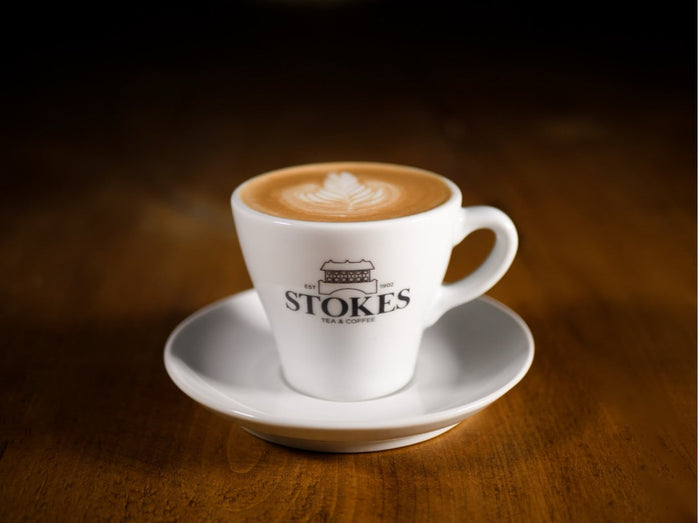
Posted on: APR 29, 2024
Posted by: STOKES COFFEE
Tags: How-To Guides & Tutorials Wholesale Coffee
Sometimes buying a coffee just isn’t an option, but what if you could make your favourite coffee at home and it taste just as good? Follow our step-by-step guide to making a Flat White at home and you can do just that!
This article includes what a Flat White consists of and its background, what you will need to make a Flat White at home, how to make it and answers to some frequently asked questions.
II - What You Will Need
III - Step-By-Step Guide
IV - FAQ's
About the Flat White
The Flat White coffee gained its popularity relatively recently compared to other coffees and has started to become a fan favourite in recent years. The coffee consists of a single or double shot of espresso and these espresso shots are restricted, to increase the strength. A flat white also contains steamed milk infused with air, unlike a cappuccino, only a small amount of aeration is used to produce what is called a ‘microfoam’. Pouring the special milk is vital to a good flat white, but when done correctly it produces a creamy taste and a very smooth texture. When considering ratios, a flat white is 1/3 espresso, 2/3 milk.

What You Will Need to Make a Flat White
Ingredients:
-18g of coffee beans or coffee ground for espresso. We recommend using our Stokes Flirt Blend for a Flat White.
-100ml of milk.
Equipment:
-A coffee grinder (if you are using coffee beans).
-A coffee machine with a steam wand/arm.
-A jug to froth your milk in.
-Ceramic coffee cup – 150-200ml capacity
-A thermometer
If you don’t have all of the things you need, you can shop for coffee equipment on our online shop.
Step-By-Step Guide to Making a Flat White
Step 1 – Grind your coffee beans (18g) to a fine consistency and ensure a level tamp.
Step 2 - brew your espresso from your ground beans.
Step 3 –With your jug of milk, steam the milk by adding hot steam from your wand at a high pressure. You want to create tiny bubbles in the milk by having your nozzle just under the milk surface and swirling it around the jug, producing whipped milk.
Step 4 - Pour the textured milk carefully into the espresso, start with the jug far away from the cup and then draw it in closer to create more detail on the top of the coffee.

FAQ’s
What’s the difference between a flat white and a cappuccino?
The main difference between a flat white and a cappuccino, is how the milk is textured; there is no foam on a flat white. Also, a traditional flat white will always come in a 6oz cup.
Why can a flat white vary between coffee shops?
Many coffee shops have their own variation of a flat white. However, a traditional flat white, which we serve at Stokes, should always be served in a 6oz cup.
What’s a skinny flat white?
A skinny flat which is just a normal flat white coffee, but made with skimmed milk, rather than whole milk.
I’m not sure where to start when it comes to making coffee at home.
We understand there’s a lot to take in when it comes to making coffee at home, especially using a coffee machine. We recommend taking our Home Barista Experience, where you can learn to get the best out of your home machine.
You might also be interested in these:
